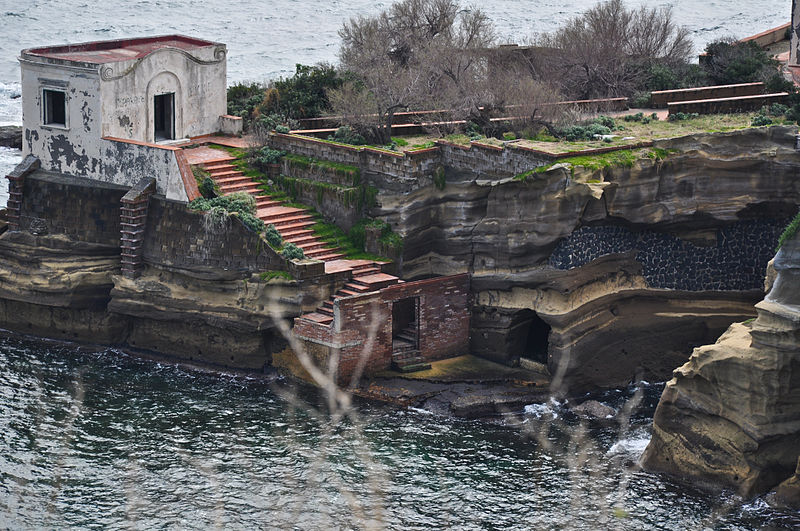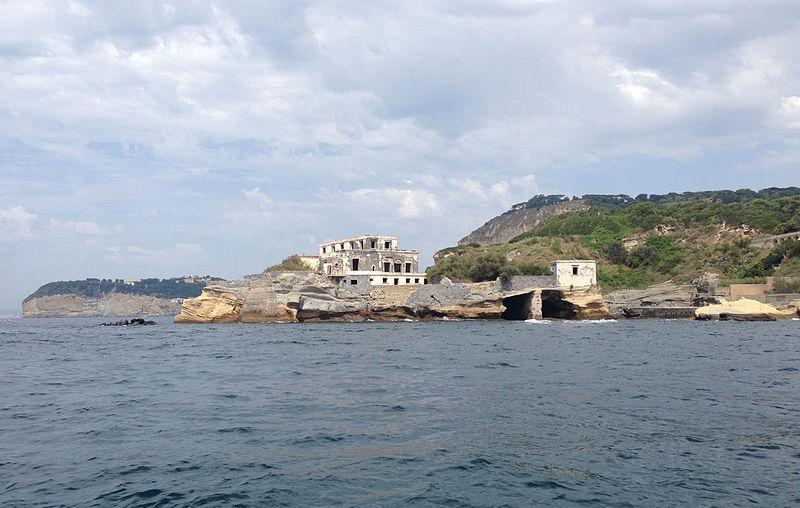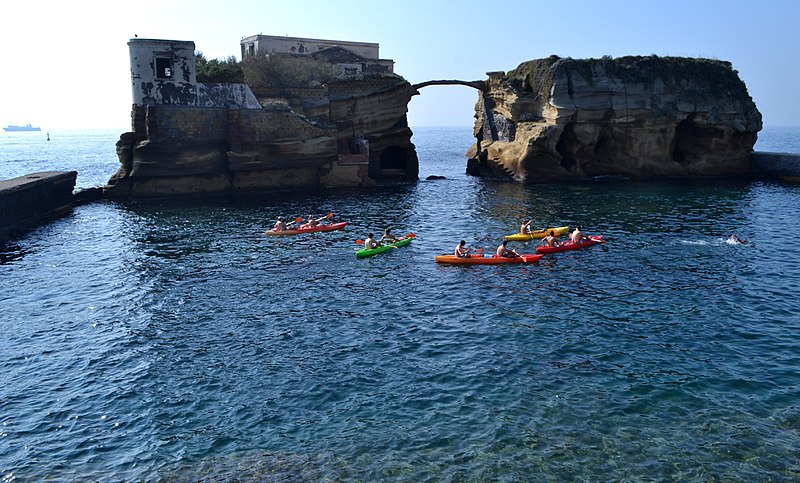Discovering La Gaiola between history and natural beauty
The Marine Protected Area “Gaiola Underwater Park” is one of the most picturesque and must-see seascapes in Naples during Summer. It stretches from the Borgo di Marechiaro to the Bay of Trentaremi.
Volcanological, biological and historic-archaeological aspects exist together here. This characteristic makes it a place unique in the world. You will find history traces surrounded by a beautiful blue sea.
The Gaiola Onlus Interdisciplinary Studies Center manages the park. It stretches for around 42 hectares. Its seabed is full of many archaeologist ruins and lived by the most original flora and fauna in the Mediterranean.
Let's go to discover more about this beautiful natural area. Its curiosities, history, what to do and how to reach it.
Gaiola: the origins of its name
There are several legends about the origin of the name "Gaiola". Officially, it is because of its two small islands, which rise a few meters away from the Posillipo coast, in the northwest sector of the Gulf of Naples.
Anyway, not everyone agrees with this explanation. There is who thinks that the name Gaiola comes from the Latin "cavea", which means cave, corrals and grotto. In dialect, Caiola and then Gaiola should indicate the several caves be visible in the area.
Also, in Neapolitan, Gajola means "cage". This translation satisfies who thinks to recognize in the buildings on the small archipelago the cage-shape.
In the end, with "cavea", we also mean the amphitheatre space used to host the spectators. Indeed, in Gaiola, you can visit the amphitheatre built on the Posillipo slope. It is part of the ancient Roman Villa owned by the patrician Publio Vedio Pollione (the Pausilypon).
History of Gaiola
Since ancient times, the place was known for its beauty. The several archaeological ruins preserved into its seafloor are proof. They have arrived here during the centuries because of the sinking of the Earth's crust.
The first one to see something in this area was the rich knight Publio Vedio Pollione. He, pierced by the enchanted landscape, built its imperial villa Pausilypon (now open to the public).
He designed the villa for its Otium, the typical Roman leisure. And from the Otium not only relax but also to get richness and business.
Indeed, here he bred fish, in particular: orate, moray eels and oyster. Here, there was the first oyster breeding in the world and developed the concept of "oyster as reach food". Moreover, the Roman breeding method was the same used in France nowadays.
But the villa wasn't only the head of business affairs. Indeed, Pausilypon comes from Greek and means "the place where the worries stop". Because of its extended surface, the villa was a proper village with its amphitheatre, which could host 2000 spectators.
After the patrician knight, following other villa's owners, such as the Augustus dynasty. In 1874, Luigi de Negri sold it and built a new villa still visible now. One of the owners was also the famous writer Norman Douglas, author of Land of Siren.
Now, the island is the property of the government of the Campania region and a protected area within it. The regional government gave it in management to Soprintendenza Archeologica. This public authority gave birth to a Study Centre in association with the NGO Centro Studi Interdisciplinari Gaiola.
Ma mo' nun chiagne cchiù / T' port' sott' a luna / Nun rir' cchiù / Gaiola portafortuna (Don't cry more! I will bring you under the moonlight. Don't laugh more, Gaiola lucky charm)Gaiola Portafortuna - Liberato
Legends and curiosities about Gaiola
Once, the people didn't like Gaiola. It was considered a cursed island that, under its beauty, hidden restless fate. This was because of the dies, suicides, financial disasters, shipwrecks that often happened to its several owners.
After these accidents, were born many legends about the area. One of the most famous is that one about a ghost of a faceless woman who prowls the area. According to the fishers of the area, it is the spirit of a woman who died during the San Giorgio cruiser's shipwreck in 1911.
Instead, according to others, it is the ghost of Hans Braun's wife. He was one of the several villa's owners, whose founded killed in his house rolled up in a carpet. Soon after, his wife also tragically died, falling in the sea because of the failure of the cable car wire where she travelled and drew in the Gaiola's water, where her ghost still lives. The people of Posillipo tells that during stormy days, between the sea noise and the heavy rainfall, you can hear loud and clear her lamentation.
Anyway, leaving aside the bad luck, Gaiola is as close as to heaven on Earth. In the song by a famous and unknown Neapolitan singer (no one has ever seen his face) Liberato, has well explained it. His song is "Gaiola Portafortuna" (Lucky Gaiola): he overturns the traditional hearsay and transforms it into a good-luck charm fetish; in few words, he explains the admirable beauty of the place.
What to do in Gaiola
There are many activities to do in Gaiola: guided visits, natural walks, water activities in the bathing area. For the different availabilities and bookings, we invite you to consult their official website www.areamarinaprotettagaiola.it.
You can choose between the sea and archaeological activities. The park is a free entry: you pay only for the selected activities.
- Visit in Pausilypon Park: Start with the visit to Seiano Grotto till Pausiypon Archeological Park, where you will admire the ruins of Velio Pollione's luxury villa that spreads from the promontory that overlooks Trentaremi Bay to the sea. Here, you will visit the theatre, odeon and boardrooms of the Roman Villa.
- Aquavision: admiring the beauty of Gaiola Underwater Park while sitting comfortably in a glass-bottomed boat.
- Sea activities: if you love sport, in the sea of Gaiola you can do snorkelling, scientific diving and kayak.
How to reach Gaiola
By Metro: take Line 2 and exit at Mergellina stop. Then, continue by bus (Capo Posillipo stop). Then, continue on foot: take Via Tito Lucrezio Caro and then Discesa Gaiola.
By Bus: from Mergellina or Vomero, take a bus (Capo Posillipo stop). Then, continue on foot: take Via Tito Lucrezio Caro and then Discesa Gaiola.
By car: from the centre city of Naples, continue in the direction of the Port, go through the Vittoria tunnel and cross the Lungomare in Via Petrarca direction, then proceed along Via Manzoni and Tito Lucrezio Caro up to the Gaiola descent. Starting from Piazza Garibaldi, the duration of the route is 34 minutes.








_Gianfranco Vitolo.jpg)
_Gianfranco Vitolo.jpg)





Lascia un commento